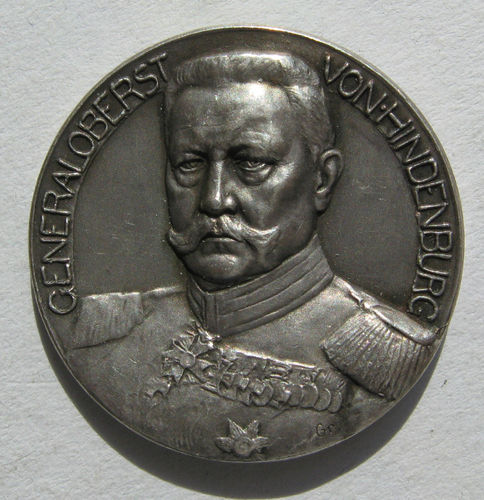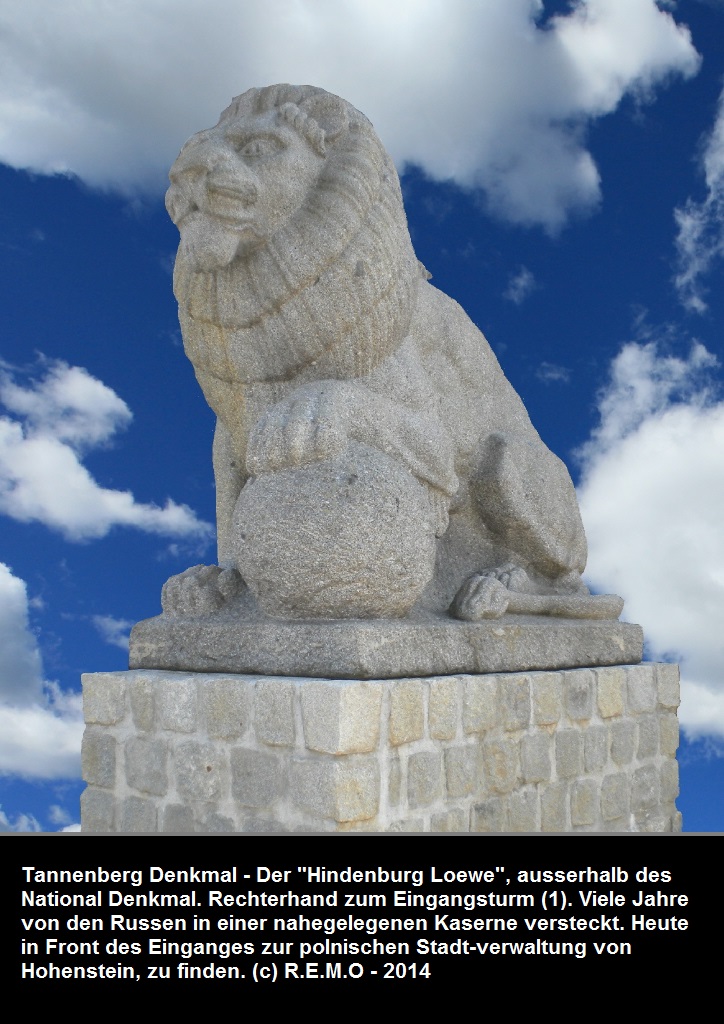The
Tannenberg Memorial -
100th anniversary of the
battle of Tannenberg 1914 - 2014 >>> Deutsche Seiten
>>>
The
Tannenberg Memorial -
100th anniversary of the
battle of Tannenberg 1914 - 2014 >>> Deutsche Seiten
>>>
Advertisement

The Tannenberg Memorial
commemorated fallen German soldiers of the second Battle of
Tannenberg in 1914, which was named after the medieval battle of
the same name. The victorious German commander, Paul von
Hindenburg, became a national hero, and was later the first and
only, free elected Reichspräsident of
Germany > MAP
& Main Tower >>>
Entrance Tower
>>>
Dedicated by Hindenburg on the 10th
anniversary of the battle of Tannenberg in 1924 near Hohenstein
(Ostpreußen) (now Olsztynek, Poland), the structure, which was
financed by donations of the German people, was built by the
architects Johannes and Walter Krüger of Berlin and completed in
1927. The octagonal layout with eight towers, each 67 feet (20 m)
high, was influenced by Holy Roman Emperor Frederick II's Castel
del Monte, and by old Germanic Burial Grounds, Inspiration came
also from the classic film "The Nibelungen", by Fritz Lang
(1924).
When Reichspräsident Hindenburg died
in 1934, his coffin and that of his wife, who had died in 1921.
Hindenburg visited the Tannenberg memorial many times, as a
"private" man - See a picture of one of his visits on
oure Main Page.. Adolf Hitler ordered
the monument to be redesigned and renamed "Reichsehrenmal
Tannenberg", after a rebuilding period in 1935, including now the
Hindenburg Tower (5). As the Red Army approached in 1945, German
troops removed Hindenburg's remains, by strict order of Adolf
Hitler, and partly demolished key structures (Hindenburg Tower 5
and the Entrance Tower, to avoid destruction by the Red Army, as
this was expected due experiences from the past. At the end of the
1950s, till early 1980`s the new Polish authorities razed the
site, leaving only few traces. Still the structures under the
Hindenburg Tower remanin intact, with 20 unknown soldiers at
rest.
The memorial was in a prominent
place in a shape reminiscent of the castles of the Teutonic
Knights. The monument's location on a hilltop was accentuated by
massive earthworks and landscaping designed to look as if nature
alone had shaped the site. The design influenced other projects
undertaken by architects and builders during the era.
A gathering of more than
100-thousand came to the dedication of the newly finished memorial
in September 1927. The 80 year old Hindenburg was dressed in the
uniform of a Colonel-in-chief of a Masurian regiment to which he'd
been appointed by the Emperor (who had since abdicated). His speech
was deemed highly nationalistic and in keeping with the times for
the Weimar Republic, but was not well received outside Germany, as
Hindenburg - in the name of the German people, refused to take the
blame on World War 1 on the German people allone. An extract from
the speech was later carved into a bronze plaque by the Nazi regime
and installed on the right side of the entrance tower of the
memorial. Six miles of veterans, resplendent in Imperial uniforms,
paid homage to Hindenburg and the
20 unknown German soldiers from the
1914 battle who were interred at the
memorial.
The architects had also built an
Restaurant and hotel near the entrance of the memorial, in
traditional East Prussian style.
"The Tannenberger
Krug". The numbers of visitors rised
during the Nazi era, that the Tannenberger Krug even required to be
extended.
In August 1933 the Nazis held a
massive demonstration at the memorial to commemorate the
anniversary of the battle. The Polish government allowed 1,500 cars
to transit through the Polish Corridor. Among those attending were
Adolf Hitler, Hermann Göring, Franz von Papen and Erich Koch, East
Prussia's Nazi governor.
A year later, the monument again
came to prominence on the death of Paul von Hindenburg. Hindenburg
had requested a simple service and that he be interred next to his
wife (who had died in 1921) in Hanover. However, Hitler decided to
seize the opportunity for propaganda and instructed Albert Speer to
ensure that the day was spectacular. It began with the
transportation of the deceased president in the dark of night, on a
gun carriage, from Hindenburg's East Prussian home Neudeck.
Following a torch-lit route and escorted by infantry and cavalry,
the cortège made its way to Hohenstein.
Hindenburg was
originally buried in tower 2 (World
War Tower) of the monument on 7 August
1934.
On 2 October 1935, the
anniversary of Hindenburg's birthday,
the President's bronze coffin was
relocated to a new, sombre chamber, within tower
5 - the Hindenburgturm, where he was
joined by his wife Gertrud, who was moved from the family plot in
Hanover. The new crypt, which was completed in the fall of 1935,
was located directly below the south tower. To create an entrance
to the crypt, Hindenburg and the 20 unknown German soldiers from
the 1914 battle were temporarily disinterred, and the level of the
plaza was lowered by 8 feet (2.4 m), with stone steps surrounding
it on all sides. The unknown soldiers were re-interred in the side
chapels. Designed by the Kruger brothers and carved by Paul
Bronisch, the entrance to Hindenburg's crypt was dominated by two
fourteen-foot sculptures of the Eternal Watch, known as the Ewige
Wache, which were carved out of more than 120 tons of imported
Konigsberg granite. The mausoleum had a dramatic vaulted
ceiling.
The re-interment of the Field
Marshal was marked by much pomp and ceremony by the Hitler
administration, who declared that the upkeep of the memorial would
thenceforth be carried out at government expense. The sarcophagus
was draped in the German War Flag for the ceremony, at which Adolf
Hitler performed the rededication. Masuria where the memorial was
built was going through an economic resurgence at that time and
nationalistic spirit was running high, on top of this Hitler's
remarks and the ceremony of re-interment caused one newspaper to
claim "a glorious return of the Teutonic Order".
From 1936-1939 a travelling
exhibition about Masuria, but centred on the Tannenberg battle and
memorial, toured Germany. The Baedecker guide of 1936 described the
Tannenberg Memorial "Where President Hindenburg rests beside his
fallen comrades" as "a place of national pilgrimage"
In January 1945, as Soviet forces
advanced into East Prussia, Hitler ordered the lead coffins of
Hindenburg and his wife to be disinterred and along with some of
the regimental standards in the tomb, removed to safety. They were
first moved to a bunker just outside Berlin, then to a salt mine
near the village of Bernterode, Thuringia (in north central
Germany), along with the remains of both Wilhelm I, German Emperor
and Frederick II of Prussia (Frederick the
Great).
The four coffins were hastily marked to indicate their contents using red crayon, and interred behind a 6-foot-thick (1.8 m) masonry wall in a deep recess of the 14-mile (23 km) mine complex, 1,800 feet (550 m) underground.
The coffins were discovered by U.S. Army Ordnance
troops on 27 April 1945, and were moved to the basement of the
heavily guarded Marburg Castle in Marburg an der Lahn, Germany. In
August 1946, 20 months after being removed from the Tannenberg
Memorial, Hindenburg and his wife were finally laid to rest by the
American army at St. Elizabeth's, the church of his Teutonic
ancestors in Marburg, where they remain
today.
On 21 January 1945, withdrawing German forces planted, on strict orders of Adolf Hitler, demolition charges inside the entrance tower and the tower previously housing von Hindenburg's coffin, causing both towers to collapse.
On 22 January Germans demolished more of the construction
with a further 30 tonnes of explosives. After the war more
destruction was caused by looting of bronze plates and memorials
once located within Tannenberg memorial, metal from the
structure, and even stones and bricks were taken.
In the spring of 1949, the Polish government ordered the
dismantling of the remains of the monument—although enough remained
for scavengers to continue recycling into local projects. Removal
of the ruins continued until the 1980s, by which time virtually
most traces of the memorial had gone.
Today, only a protruding island in an isolated field
remains to mark the extensive 120-acre (0.49 km2) site. The Court
of Honour (which measured slightly larger than a football field)
has been reduced to little more than an overgrown pit of scattered
debris and rubble..
After the Second World War, much of the fabric of the
stone-and-granite memorial was used to build the Soviet war
memorial in Olsztyn, the Monument to the Ghetto Heroes in Warsaw,
and for the new Communist Party headquarters in Warsaw.

Several significant remnants of the structure can still be seen elsewhere. Among these is the perfectly preserved sculpted lion, the lion of Paul von Hindenburgs troups, which once topped a twenty-foot memorial pillar at the right hand side of entrance to the monument (Tower 1) and now is displayed in the town square in nearby Olsztynek
Neue Webseite ist in Arbeit: tannenberg.eventpicture.co.uk
Advertisement
>>>
Back to the Main
Page >>>
Map & Location
>>>